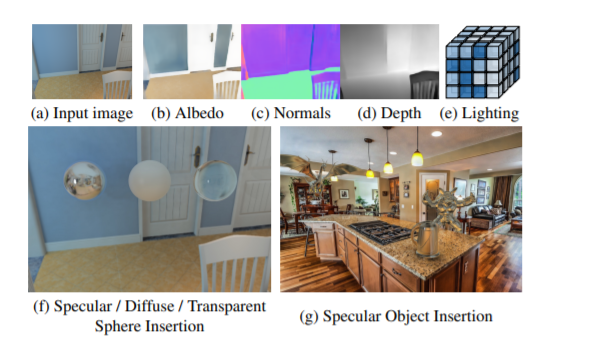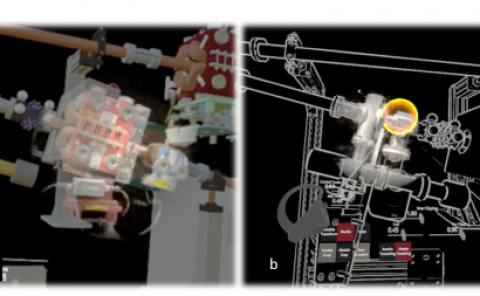Learning Indoor Inverse Rendering with 3D Spatially-Varying Lighting
PubDate: Sep 2021
Teams: NVIDIA;University of Toronto;Vector Institute
Writers: Zian Wang, Jonah Philion, Sanja Fidler, Jan Kautz
PDF: Learning Indoor Inverse Rendering with 3D Spatially-Varying Lighting

Abstract
In this work, we address the problem of jointly estimating albedo, normals, depth and 3D spatially-varying lighting from a single image. Most existing methods formulate the task as image-to-image translation, ignoring the 3D properties of the scene. However, indoor scenes contain complex 3D light transport where a 2D representation is insufficient. In this paper, we propose a unified, learning-based inverse rendering framework that formulates 3D spatially-varying lighting. Inspired by classic volume rendering techniques, we propose a novel Volumetric Spherical Gaussian representation for lighting, which parameterizes the exitant radiance of the 3D scene surfaces on a voxel grid. We design a physics based differentiable renderer that utilizes our 3D lighting representation, and formulates the energy-conserving image formation process that enables joint training of all intrinsic properties with the re-rendering constraint. Our model ensures physically correct predictions and avoids the need for ground-truth HDR lighting which is not easily accessible. Experiments show that our method outperforms prior works both quantitatively and qualitatively, and is capable of producing photorealistic results for AR applications such as virtual object insertion even for highly specular objects.


